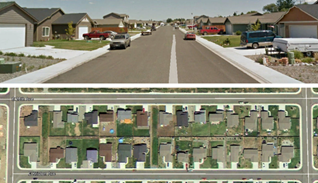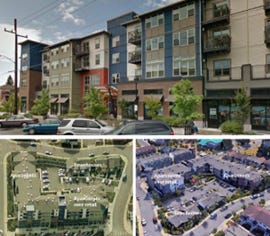Housing moves by NY leaders
The Mayor and the Governor have laid down new plans and agendas to create more housing in NY in their respective State of City/State addresses. Below are a few of the initiatives that appear most salient to owners of multifamily buildings in NYC and those interested in that market.
Increasing housing density near transit hubs
Kathy Hochul’s new goal of 800,000 new apartment units built by 2032 breaks down in a few ways. One important component is the upzoning of communities near their trains and subways (transit hubs). Wealthier suburbs like Scarsdale, NY, for instance, currently only allow for single family home zoning near their trains. Hochul’s plan would alter this and enable higher density developments near train stations. Officials in NYC, along with those in suburbs within 15 miles from NYC’s border, would need to legalize at least 50 housing units / acre within a half mile radius of train and subway stations. According to Hochul, if developers choose to build (because nothing happens if private investors don’t act on this), this change could yield 25,000 additional housing units. Surprisingly, this will apply to certain parts of the Bronx, Queens, and Staten Island as well, which currently restrict density.
Hochul wants to go from this:

4 dwelling units per acre showcased with a new subdivision with single-family homes. Source: The Urbanist. To this

59 dwellings units per acre show via a 4-story mixed use apartment building, coupled with a few single story townhomes. Source: The Urbanist. Who supports this?
Assembly members Phil Ramos and Kimberly Jean-Pierre. Jean Pierre says, “I think developing transit-oriented downtowns is great for our young professionals.”
Pushing back the 421 a tax abatement deadline
Kathy Hochul’s NY state budget proposal suggests extending the 421 A tax break. But this isn’t what it sounds like. The extension would not enable bright eyed, bushy browed developers to begin new projects. It would only prevent developers who have secured preliminary tax abatements from losing them if they did not deliver completed projects by June of 2026. Why was this important? According to the Real Estate Board of NY (REBNY) under the current deadline, the construction of approximately 33,000 units (that’s 20% more than the number of new apartments delivered to NYC in 2022) was being halted by developers because of an inability to meet the required tax abatement deadline. In particular, the problem was that lenders financing those multifamily developments had allegedly been requiring project completions a year prior to the June 2026 deadline. Building in NYC in under two years can prove challenging. That has forced developers to hold off on certain projects.
Hochul’s move is aligned with her goals. It also makes sense for local NYC officials to support the extension because affordable housing projects approved last year that will deliver thousands of income restricted units may be jeopardized if this extension is not approved. This extension proposal could also work as a political gambit that enables lawmakers to put forward their own visions for a tax abatement. This extension could be used to arrive at a compromise more quickly on a new abatement plan.
Garment district rezoning in NYC’s west side
Mayor Adams is leaning into rezonings as a tool for housing production. His latest project is to advance a rezoning of Midtown Manhattan. The rezoning emerged out of Adams’s Office Adaptive Reuse study, which pointed out that much of the land between West 23rd street and 41st streets prevented residential development and conversion of office into residential. Next up, the mayor plans to engage the community in the garment district, where this is being suggested. According to Politico, the Mayor intends to submit a formal proposal for a rezoning to ULURP in 2024.
Who supports this? City Council Members Erik Bottcher and Keith Powers.
“I have yet to meet a New Yorker who doesn’t think we should be converting commercial space into residential space,” says Council Member Erik Bottcher, who represents the area.
Sources: NY Focus, The Urbanist, The Real Deal, REBNY


